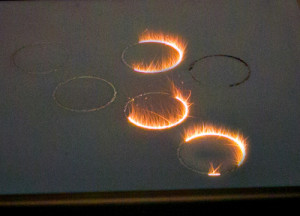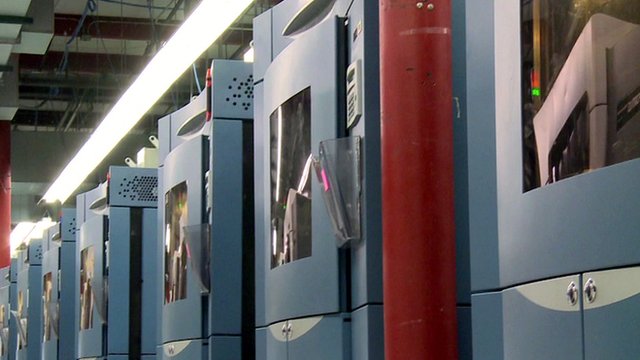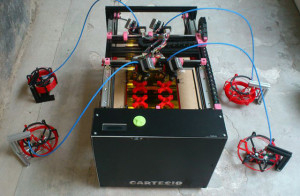Inside the factory of world’s largest manufacturer of aircraft engines in the fossilized outskirts of Cincinnati, Ohio, GE Aviation is now producing new fuel nozzles using additive manufacturing techniques. The nozzle, which was once constructed by producing and assembling 18 parts is now constructed in a single piece with an overall weight 25% lighter than its predecessor. According to GE Aviation, this new cutting edge technology requires no cutting at all and has given them new degrees of freedom to think about component design.

GE is indeed one of a few global companies currently pushing the AM paradigm towards mass production.
Industrial scale 3D printers have for a long time now threatened to change the face of traditional assembly line manufacturing, but it hasn’t really kicked-off the revolution yet. The greatest known limitation of additive manufacturing is its inability to mass-produce. To replace the millions of parts manufactured daily in an assembly line in a factory in China by additive manufacturing would mean installing vast numbers of industrial scale 3D printers that would demand astronomical capital investments that would not be economically competitive. Hence, today AM is generally viewed as a complementary technology, rather than a competitive one when it comes to assembly line manufacturing.
However, the tide is slowly turning with more high-volume applications of AM emerging. One of the most recent is coming from three UK-based companies, Renishaw, Hieta and Sysemia, who have recently joined hands in a collaborative project that aims to produce 50,000 recuperates per year — a device that recovers waste heat in engines — using industrial 3D printing. Doing so may break new ground in this industry where one of the biggest challenges 3D printing industry faces is how to commercialise 3D printed products. The project is expected to redefine the boundaries of additive manufacturing and prove that a large number of the same object can be produced at a competitive cost. The project is funded by the UK’s innovation agency, the Technology Strategy Board, an organization set up by the Government to stimulate and support business-led innovation.

Mike Adams, chief executive of Hieta Technologies encourages us to “imagine a situation where the whole world can take part in this process, with 3D printing done at home, in the office, at hospitals, in schools. This could open doors to all sorts of every day products being ‘printed’ by anyone who has access to this technology.”

Widespread adoption of additive manufacturing in factories for mass-producing designs will eventually lead to economies of scales by reducing the long run average costs of production and the overhead costs. The following factors can be assumed for this claim:
- The hardware price and the ink (majorly thermoplastics) price will allow for economic viability
- The cost of 3D printing will get lower, just like that of 2D printing, with new advancements in technology
- Using several 3D printers at the same time in parallel will be cheaper, since the controller can be shared and the material supplied from a central bin
- The consumer price of a made-in-China product is 3 to 10 times the factory price because of the associated wastes in the supply chain
- As the technology matures, 3D printing processes will get faster with advanced research
- The cost of designing the 3D object in the software will be cheaper with the availability of large volumes of open-source designs and free or low cost software being made available, offering the creative freedom to customize one’s own design.
- Possibility of high quality products as 3D printers can precisely manufacture designs with less than 0.1mm dimensional error
- Manufacturing of products can be localized by setting up 3D printing hubs and this can save tremendously on transportation and logistics costs
- Additive manufacturing can offer substantial reductions in energy consumption and CO2 emissions to provide us with greener products. A recent study by the Michigan Technology University showed that 3D printed products require 41% to 74% less energy than large-scale manufactured goods.

Mass produced 3D printed products could expose the limits of 20th century manufacturing models as additive manufacturing provides a whole different degree of freedom regarding how people and organizations think about component design and their production. They no longer need to understand what the limitations of traditional assembly line are, and what the costs of those limitations are.
References:
https://www.bbsp.co.uk/bristol-and-bath-science-park-news/?ID=118
https://www.bbc.co.uk/news/technology-25101388
https://www.qualityinspection.org/3d-printing-china/

Leave A Comment